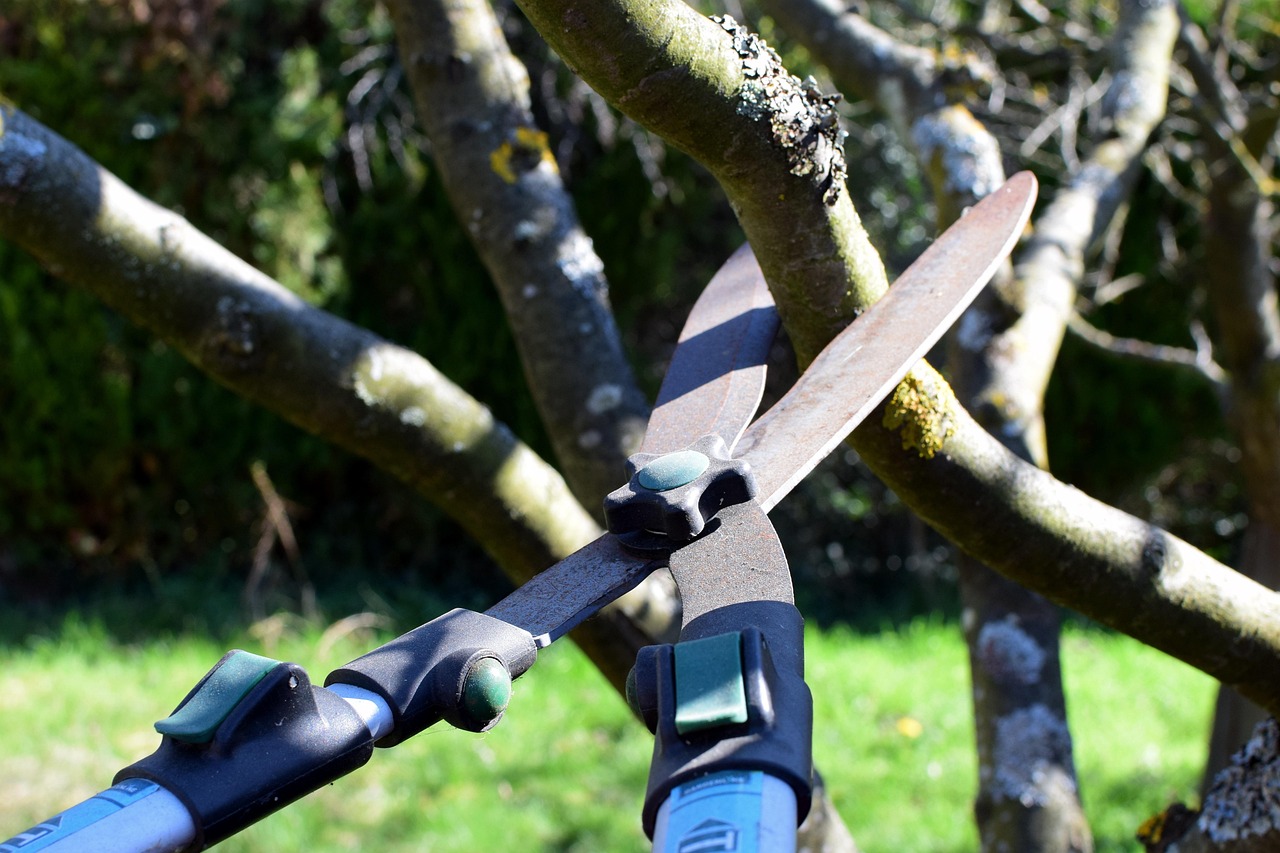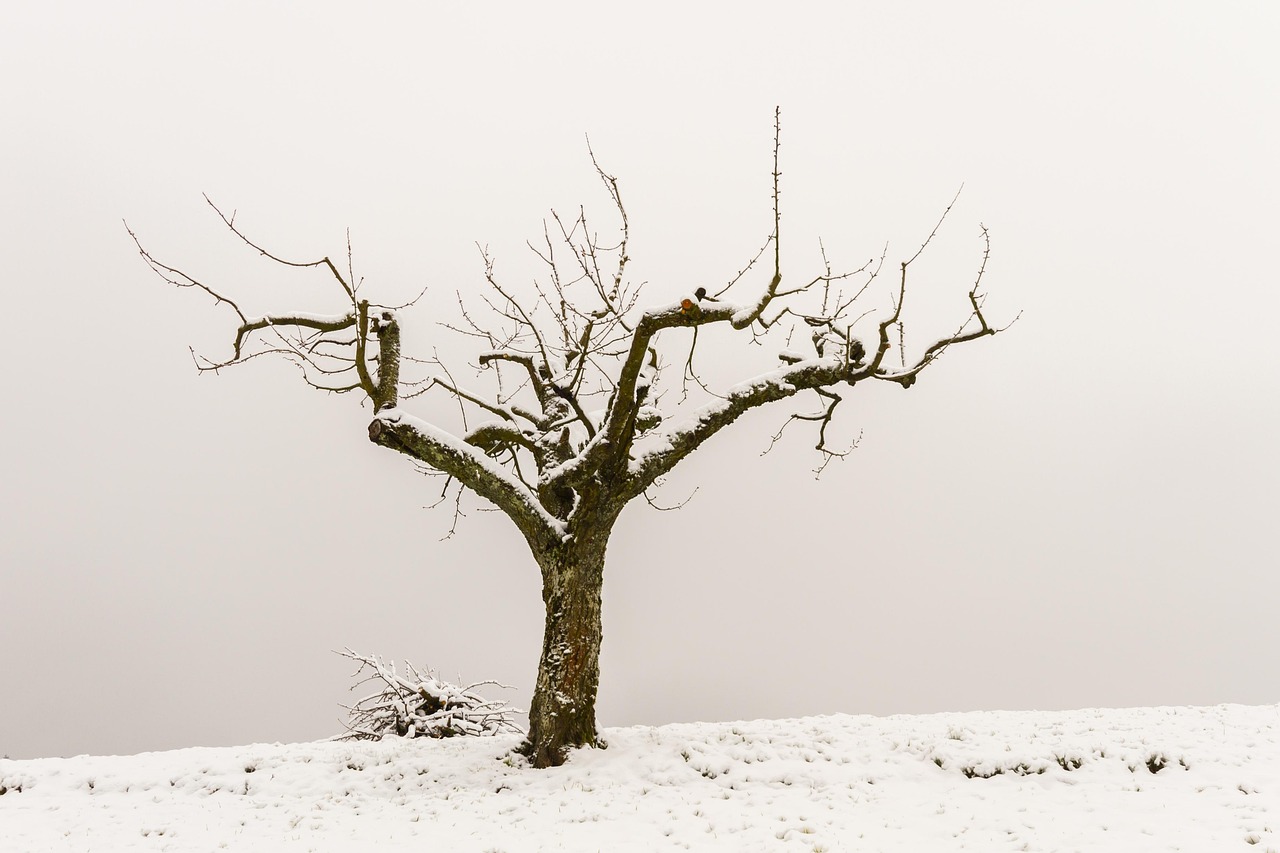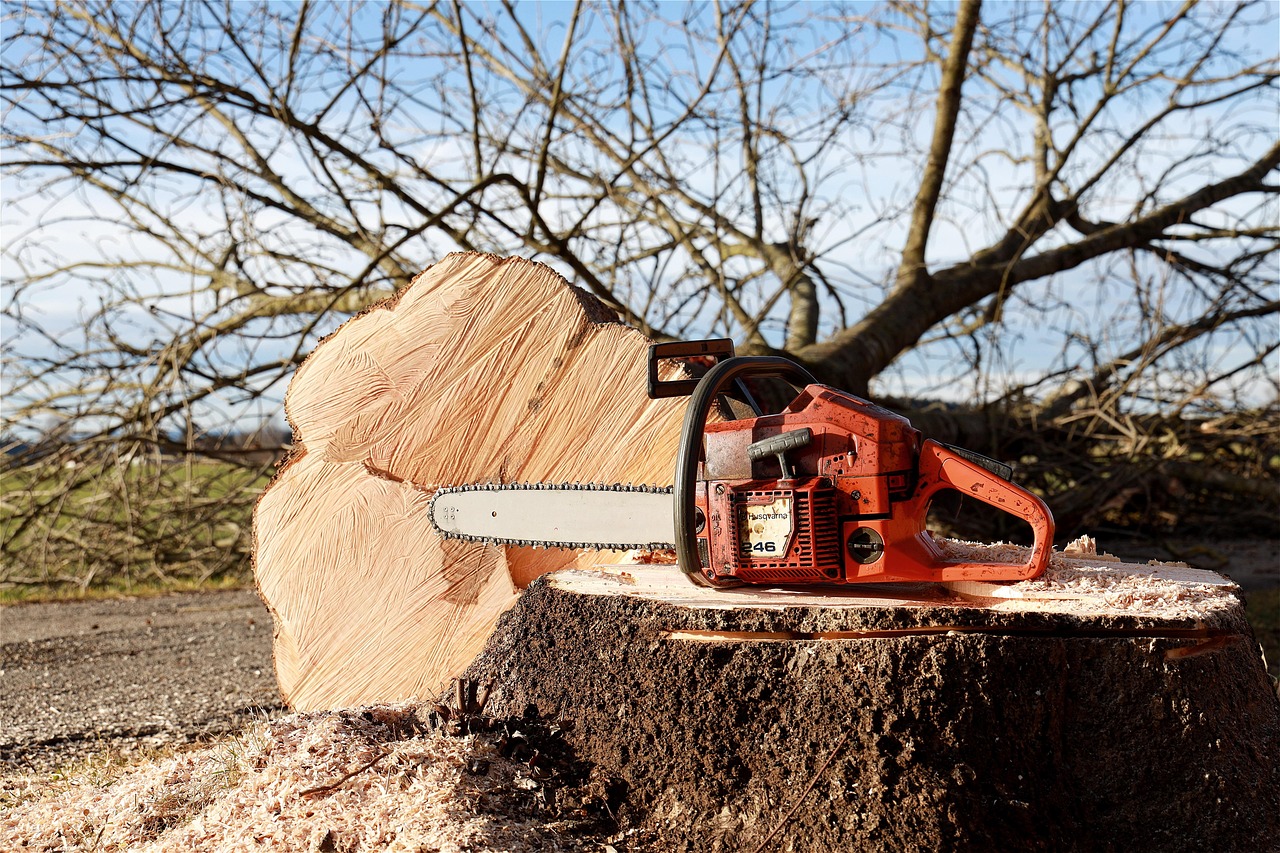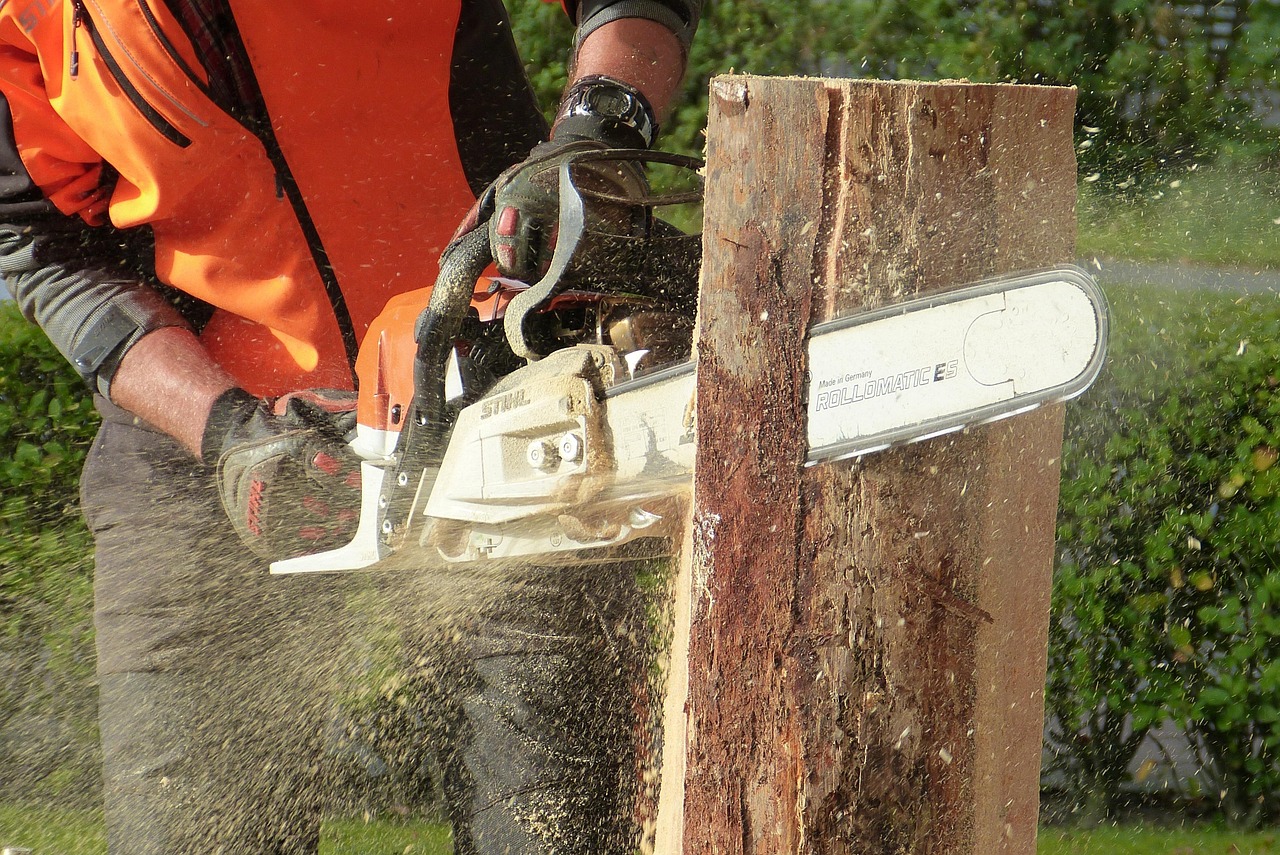Overgrown hedges can obstruct sunlight, reduce curb appeal, and harbor pests. Proper tree pruning restores their shape, boosts health, and encourages vibrant growth. This guide covers the best techniques, timing, tools, and care practices to effectively revive your overgrown hedges, ensuring a tidy, healthy, and attractive landscape.
Overgrown hedges can become a common issue for homeowners and gardeners. They may start as small shrubs or bushes but can quickly grow out of control. When this happens, they can block light, impede views, and even become a habitat for pests. Restoring these hedges through tree pruning is not only beneficial for the plants but also for the overall garden environment.

Understanding the basics of tree pruning is crucial for successful hedge restoration. Different plants have varying growth habits and requirements. Therefore, it is important to identify the specific type of hedge before beginning the pruning process. This knowledge ensures that you use the right techniques and tools.
Importance of Pruning
Pruning serves multiple purposes. It helps maintain the health of the plant, enhances its appearance, and encourages new growth. Here are some key reasons why pruning is important:
- Health Improvement: Removing dead or diseased branches prevents the spread of disease.
- Shape Maintenance: Regular pruning keeps hedges looking tidy and well-formed.
- Increased Airflow: Pruning allows better air circulation, reducing the risk of fungal infections.
- Enhanced Growth: Encouraging new growth leads to denser foliage and improved flowering.
In addition to these benefits, pruning can also help manage the size of your hedge. This is particularly important in smaller gardens where space is limited. By controlling the height and width, you create a more balanced landscape.

Tools Needed for Tree Pruning
Having the right tools makes the pruning process easier and more effective. Here is a list of essential tools you should consider when pruning overgrown hedges:
- Pruning Shears: Ideal for cutting small branches and stems.
- Loppers: Useful for thicker branches that are too large for shears.
- Saw: A handsaw or pole saw may be necessary for very thick or tall branches.
- Gloves: Protect your hands from thorns and sharp edges.
- Ladder: A sturdy ladder can help you reach higher areas safely.
Using clean, sharp tools is essential. Dull blades can damage plants and make pruning less effective. Always sanitize your tools before and after use to prevent disease transmission between plants.
When to Prune Hedges
The timing of your pruning efforts is critical for optimal results. Each type of hedge has its own ideal pruning schedule, which typically falls into two categories: winter and summer pruning.

Winter Pruning: Many deciduous hedges benefit from winter pruning when they are dormant. This allows you to see the structure of the hedge clearly without foliage obstructing your view. Winter pruning encourages vigorous growth in spring.
Summer Pruning: Some evergreen hedges are better pruned in late spring or early summer after their growth spurt. This type of pruning helps maintain shape while reducing the risk of damaging new growth.
| Type of Hedge | Best Time to Prune | Notes |
|---|---|---|
| Deciduous Hedges | Late Winter to Early Spring | Prune while dormant for best results. |
| Evergreen Hedges | Late Spring to Early Summer | Avoid pruning during extreme heat. |
| Flowering Hedges | After Blooming | Prune to maintain shape without removing flowers. |
Understanding the best time to prune your hedges will help you achieve a healthier and more attractive appearance. Pruning at the wrong time can lead to reduced flowering or even damage to the plant.

In summary, tree pruning is vital for restoring overgrown hedges. Knowing the right tools, timing, and techniques can significantly improve the health and appearance of your landscape. The next step involves learning specific pruning techniques tailored to different types of hedges, ensuring effective restoration and maintenance for years to come.
Pruning Techniques for Overgrown Hedges
When it comes to restoring overgrown hedges, employing the right pruning techniques is key. These methods help achieve the desired shape, encourage healthy growth, and ensure the longevity of your plants. Each technique serves a specific purpose, and understanding them will enable you to tackle your hedges effectively.
Types of Pruning Techniques
There are several pruning techniques that can be employed depending on the situation and the type of hedge. Below are some common techniques:
- Thinning: This method involves selectively removing branches to improve air circulation and light penetration. It helps reduce the density of the hedge without drastically changing its shape.
- Heading Back: This technique entails cutting back branches to a certain point to encourage new growth. It promotes bushier growth and is particularly effective for hedges that have become leggy.
- Renewal Pruning: Mostly used on older hedges, this technique involves cutting back large portions of the hedge to rejuvenate its growth. It allows new shoots to emerge and breathe life back into tired plants.
- Shearing: This is often used for formal hedges. It involves trimming the hedge to a uniform shape using shears or hedge trimmers. While it creates a neat appearance, it may not promote the healthiest growth.
Choosing the right technique depends on the condition of your hedge and your aesthetic goals. For example, heading back is ideal for promoting fuller growth, while thinning is better suited for reducing density without changing the overall size significantly.
Step-by-Step Pruning Process
To effectively prune your overgrown hedges, follow these steps:
- Assess Your Hedge: Begin by evaluating the overall health and shape of your hedge. Identify any dead, damaged, or diseased branches that need removal.
- Choose Your Tools: Gather the necessary tools based on the size and thickness of your hedge. Ensure they are clean and sharp.
- Plan Your Cuts: Decide which pruning technique to use. Mark areas where you will make cuts to maintain control over the process.
- Start Pruning: Begin with dead or diseased branches, cutting them back to healthy tissue. Follow with your chosen technique for the remaining parts of the hedge.
- Clean Up: After pruning, gather and dispose of cuttings to prevent disease spread. Consider composting healthy trimmings.
This systematic approach not only ensures that you cover all necessary areas but also makes the process more manageable and efficient.
Safety Considerations
Pruning can involve risks, especially when using sharp tools or working at heights. Here are some safety tips to keep in mind:
- Wear Protective Gear: Always wear gloves, eye protection, and sturdy footwear to shield yourself from injuries.
- Use Ladders Safely: Ensure your ladder is stable and positioned correctly before climbing. Avoid overreaching while on a ladder.
- Handle Tools with Care: Always cut away from your body and never try to catch falling branches.
By following these safety precautions, you can minimize risks and work more confidently during your pruning tasks.
Post-Pruning Care
Caring for your hedges after pruning is essential for their recovery and continued health. Here are some recommended practices:
- Watering: Ensure your hedges receive adequate water after pruning. This helps support new growth and recovery.
- Fertilizing: Consider applying a balanced fertilizer to provide nutrients that may have been depleted during pruning. Choose a fertilizer appropriate for your specific hedge type.
- Pest Monitoring: Keep an eye out for pests that may target stressed plants. Early detection can prevent infestations from taking hold.
The right post-pruning care can make a significant difference in how well your hedges recover and thrive after the pruning process.
Aesthetic Considerations
Pruning is not just about maintaining health; it also plays a crucial role in shaping your landscape. Here are some aesthetic aspects to consider:
- Shape and Form: Decide whether you want a formal or informal look for your hedge. Formal hedges typically require more regular shearing, while informal ones can be allowed to grow more naturally.
- Height Management: Consider how tall you want your hedge to be. Regular pruning can help maintain a desired height, enhancing both privacy and aesthetics.
- Tapering: When pruning, tapering the sides so that the base is wider than the top can allow better light penetration and support healthier growth.
By integrating these aesthetic considerations into your pruning strategy, you can create visually appealing hedges that complement your garden’s design.
Common Mistakes in Hedge Pruning
While pruning can significantly enhance the health and appearance of overgrown hedges, several common mistakes can hinder the results. Being aware of these pitfalls can help you avoid them and achieve a better outcome.
Over-Pruning
One of the most frequent mistakes is over-pruning. Removing too much foliage can stress the plant and lead to poor growth. Here are some signs that you may be over-pruning:
- Excessive Leaf Loss: If you notice a drastic reduction in leaves, it can hinder photosynthesis.
- Weak New Growth: Over-pruned hedges may produce weak or spindly new growth.
- Increased Vulnerability: Too much pruning can expose the plant to pests and diseases.
To avoid this mistake, always assess how much growth you are removing. A good rule of thumb is to prune no more than one-third of the plant at a time.
Ignoring Plant Species
Different species of hedges have unique growth habits and requirements. Ignoring these differences can lead to improper pruning techniques. For instance:
- Deciduous Plants: Typically benefit from late winter pruning, as they are dormant.
- Evergreen Plants: Require careful timing in spring to avoid disrupting new growth.
- Flowering Hedges: Should be pruned after blooming to preserve flowers for the next season.
Researching the specific needs of your hedge type will ensure you use the correct pruning approach.
Seasonal Considerations for Pruning
Understanding seasonal changes is crucial for effective hedge pruning. Different seasons bring varying conditions that can affect your approach:
Spring Pruning
Spring is an excellent time for pruning certain types of hedges, especially evergreens. Here are some tips:
- Timing: Wait until new growth begins but before it becomes too vigorous.
- Aim for Shape: Focus on shaping rather than cutting back too much foliage.
Summer Pruning
Summer is typically focused on maintenance. Regular trimming can keep hedges looking neat. Consider the following:
- Light Trimming: Remove any stray branches or excessive growth to maintain shape.
- Avoid Heavy Cuts: Heavy pruning during summer can stress the plant.
Fall Pruning
Fall pruning is generally not recommended for most hedges, particularly those that bloom in spring. However, late fall can be suitable for some evergreen varieties. Keep these points in mind:
- Avoid Late Cuts: Pruning too late can stimulate new growth that won’t harden off before winter.
- Focus on Cleanup: Remove dead or damaged branches to prepare for winter.
The Role of Mulching and Watering
After pruning, applying mulch and watering properly can enhance recovery and support healthy growth. Here’s how they contribute:
Mulching
Mulching helps retain soil moisture and suppress weeds around your hedges. Consider these factors when mulching:
- Selecting the Right Mulch: Organic mulches like wood chips or bark are beneficial as they decompose.
- Applying Correctly: Spread a layer of mulch around the base, but keep it away from the stem to prevent rot.
Watering
Proper watering is critical after pruning. Here are some tips for effective watering:
- Deep Watering: Water deeply but infrequently to encourage root growth.
- Avoid Overwatering: Ensure good drainage to prevent root rot.
Both mulching and watering play significant roles in helping your hedges recover from the stresses of pruning, promoting healthy regrowth and maintaining overall plant vigor.
Pest and Disease Management
After pruning, it’s essential to monitor your hedges for pests and diseases that may take advantage of stressed plants. Here are some common issues to look out for:
Pests
Several pests target hedges, especially after pruning. Keep an eye out for:
- Aphids: Small sap-sucking insects that can weaken plants and cause leaf curling.
- Spider Mites: Tiny pests that thrive in dry conditions, leading to stippled leaves.
- Caterpillars: Larvae that can defoliate plants quickly if not managed.
Diseases
Diseases can also affect hedges, particularly if they have been pruned improperly. Common diseases include:
- Powdery Mildew: A fungal disease that appears as a white powdery coating on leaves.
- Canker Diseases: Affect stems and branches, causing dieback if left untreated.
- Root Rot: Often caused by overwatering or poor drainage, leading to plant decline.
Regular inspections will help catch any issues early, allowing for timely intervention and treatment. By being proactive, you can maintain the health and beauty of your hedges long after pruning has taken place.
Maintaining Your Hedges After Pruning
After the initial pruning, ongoing maintenance is vital for the long-term health and appearance of your hedges. Regular care will ensure that they remain vibrant and well-shaped. Here are some essential post-pruning maintenance tips:
Regular Inspections
Conducting regular inspections of your hedges allows you to catch any signs of distress early on. Look for:
- New Growth: Monitor how quickly new shoots are developing. Healthy hedges should show signs of vigorous growth after pruning.
- Pest Activity: Keep an eye out for the presence of pests, as discussed previously. Early detection is crucial for effective treatment.
- Overall Health: Check for any discoloration or wilting leaves, which may indicate underlying issues.
Fertilization
Providing your hedges with the right nutrients is essential for their recovery and growth. Here are some guidelines for fertilization:
- Type of Fertilizer: Use a balanced slow-release fertilizer that provides essential nutrients without causing excessive growth.
- Timing: Fertilize in early spring as new growth begins to emerge. This timing helps support healthy development.
- Application Method: Follow the manufacturer’s instructions for application rates to avoid over-fertilization.
Watering Practices
Watering continues to be a critical factor even after pruning. Here are some watering tips to follow:
- Consistent Moisture: Ensure that your hedges receive consistent moisture, especially during dry spells. Deep watering is preferable to frequent shallow watering.
- Avoid Water Stress: Monitor rainfall and adjust your watering schedule accordingly to prevent stress on the plants.
Seasonal Adjustments
As seasons change, so do the needs of your hedges. Be prepared to adjust your care regimen accordingly:
- Winter Protection: For regions with cold winters, consider applying mulch around the base to protect roots from freezing temperatures.
- Summer Care: In hotter months, ensure that hedges are adequately watered and shaded if necessary.
Strategies for Long-Term Health
Achieving long-term health and vitality in your hedges requires an ongoing commitment to care. Here are some additional strategies to consider:
Companion Planting
Consider incorporating companion plants around your hedges. These plants can provide benefits such as:
- Pest Control: Certain flowers or herbs can attract beneficial insects that prey on pests.
- Nutrient Support: Some plants enrich the soil with nitrogen or other nutrients that can benefit nearby hedges.
Soil Health
The health of the soil directly influences the condition of your hedges. Here’s how to maintain soil health:
- Add Organic Matter: Regularly incorporate compost or organic mulch into the soil to improve nutrient content and structure.
- pH Testing: Conduct soil tests periodically to check for pH imbalances and adjust accordingly using lime or sulfur as needed.
Professional Help
If you find that your hedges are not responding as expected despite your best efforts, it may be time to consult a professional arborist or landscaper. They can provide expert advice tailored to your specific situation and help address any complex issues.
Final Thoughts
Restoring overgrown hedges through tree pruning is a rewarding endeavor that enhances both the beauty and health of your landscape. By understanding the principles of effective pruning, maintaining proper care, and being vigilant about potential pests and diseases, you can ensure that your hedges thrive for years to come.
The key takeaways from this article include the importance of timing and techniques in pruning, the necessity of post-pruning care such as watering and fertilizing, and the value of ongoing maintenance practices. With these strategies in place, you will not only restore overgrown hedges but also promote a lush and vibrant garden environment.
Whether you are a seasoned gardener or just starting, proper tree pruning can transform overgrown hedges into stunning features of your landscape. Embrace the process and watch as your efforts lead to a flourishing outdoor space.
